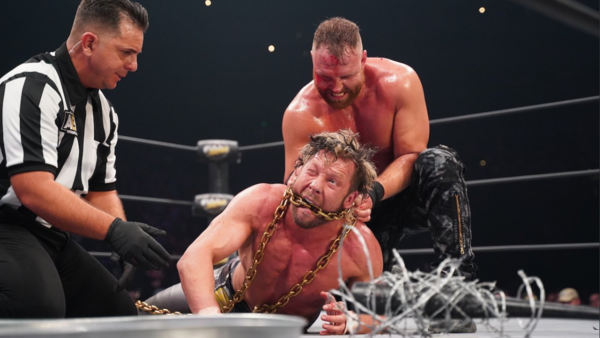How AEW Perfected Pro Wrestling Storytelling

He is not the man he was in Japan. As Jim Ross alluded to, he may have left his “wrestling heart” there. A series of high-profile losses have affected his confidence. He overcompensated by attempting to beat Jon Moxley in his own domain. Moxley, of course, had reframed his G1 Climax run in AEW canon as a scouting mission. Omega defeated Joey Janela in an unsanctioned Lights Out match, but failed to defeat the master.
AEW has neatly sidestepped a plot hole here. The promotion cannot book Kenny Omega as the best version of himself because he would move within Chris Jericho’s orbit. It’s too early to run that match back, and AEW has to present this version of Chris Jericho now. His recognisable star power and credibility has legitimised the AEW World Championship as prestigious. Instantly, it feels like a worthy prize. Jericho is a heel. He cannot chase; he must hold, and hold that belt with both desperation and gravitas. Omega must wait, and this crisis of his explains that wait.
AEW has mastered both the how—and more importantly, the when—of pro wrestling storytelling. Kenny Omega isn’t a geek. He is on a path to redemption that must, for now, be obscured by the fog of doubt.
Wins and losses don’t just matter in the context of AEW’s narrative universe; they mean everything to the presentation of the talent. AEW isn’t burying Kenny Omega because AEW isn’t burying the lede. If he and Page feel like losers, that is because they are. Every team and individual sportsperson suffers from a loss of form—and since AEW has fashioned itself as a league, perhaps we need to move away from the old, “buried” optics associated with wrestling critique.
Beyond the title pictures, AEW has informally marketed itself as a “buffet” of professional wrestling.
CONT'D...(2 of 5)